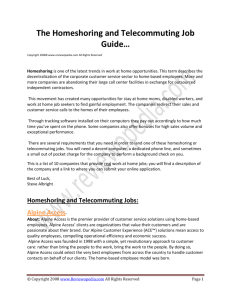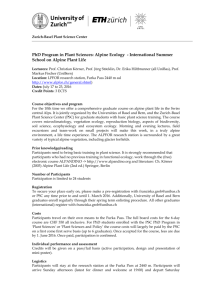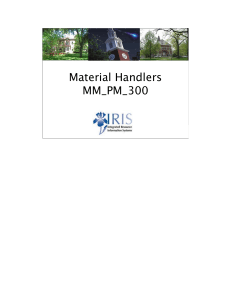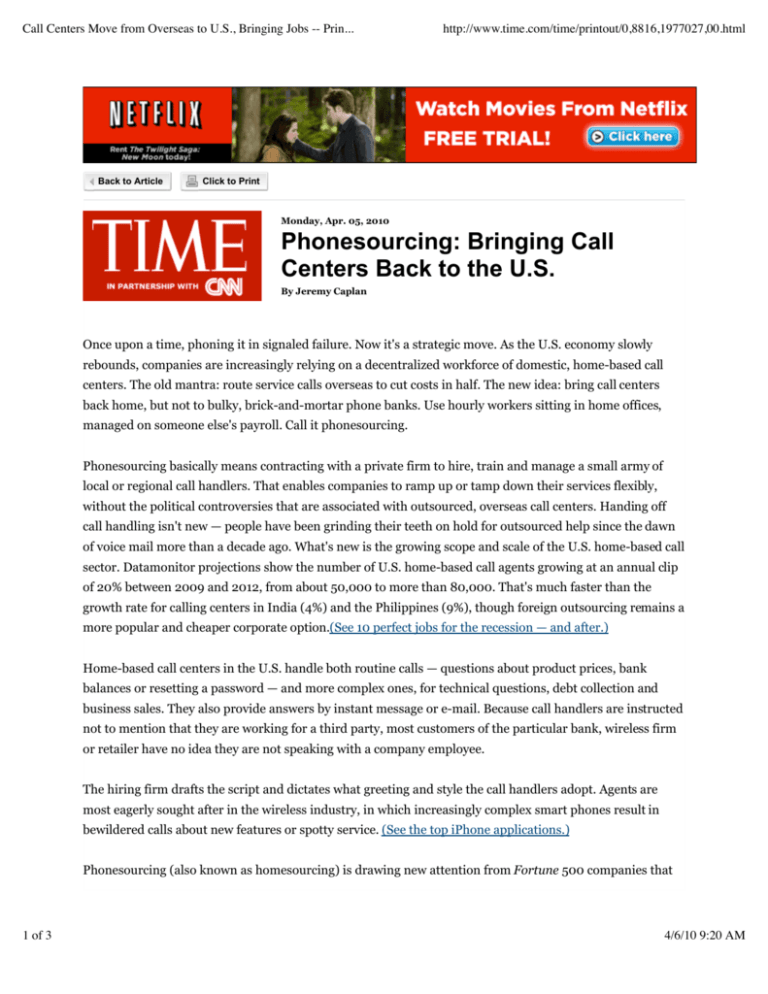
Call Centers Move from Overseas to U.S., Bringing Jobs -- Prin...
Back to Article
http://www.time.com/time/printout/0,8816,1977027,00.html
Click to Print
Monday, Apr. 05, 2010
Phonesourcing: Bringing Call
Centers Back to the U.S.
By Jeremy Caplan
Once upon a time, phoning it in signaled failure. Now it's a strategic move. As the U.S. economy slowly
rebounds, companies are increasingly relying on a decentralized workforce of domestic, home-based call
centers. The old mantra: route service calls overseas to cut costs in half. The new idea: bring call centers
back home, but not to bulky, brick-and-mortar phone banks. Use hourly workers sitting in home offices,
managed on someone else's payroll. Call it phonesourcing.
Phonesourcing basically means contracting with a private firm to hire, train and manage a small army of
local or regional call handlers. That enables companies to ramp up or tamp down their services flexibly,
without the political controversies that are associated with outsourced, overseas call centers. Handing off
call handling isn't new — people have been grinding their teeth on hold for outsourced help since the dawn
of voice mail more than a decade ago. What's new is the growing scope and scale of the U.S. home-based call
sector. Datamonitor projections show the number of U.S. home-based call agents growing at an annual clip
of 20% between 2009 and 2012, from about 50,000 to more than 80,000. That's much faster than the
growth rate for calling centers in India (4%) and the Philippines (9%), though foreign outsourcing remains a
more popular and cheaper corporate option.(See 10 perfect jobs for the recession — and after.)
Home-based call centers in the U.S. handle both routine calls — questions about product prices, bank
balances or resetting a password — and more complex ones, for technical questions, debt collection and
business sales. They also provide answers by instant message or e-mail. Because call handlers are instructed
not to mention that they are working for a third party, most customers of the particular bank, wireless firm
or retailer have no idea they are not speaking with a company employee.
The hiring firm drafts the script and dictates what greeting and style the call handlers adopt. Agents are
most eagerly sought after in the wireless industry, in which increasingly complex smart phones result in
bewildered calls about new features or spotty service. (See the top iPhone applications.)
Phonesourcing (also known as homesourcing) is drawing new attention from Fortune 500 companies that
Copyright © 2010 Time Inc. All rights reserved. Reproduction in whole or in part without permission is prohibited.
Privacy Policy | Add TIME Headlines to your Site | Contact Us | Customer Service
1 of 3
4/6/10 9:20 AM
Call Centers Move from Overseas to U.S., Bringing Jobs -- Prin...
http://www.time.com/time/printout/0,8816,1977027,00.html
are retreating from cost-motivated overseas outsourcing as foreign labor markets tighten, currencies
appreciate and home-based call centers offer increasingly competitive local call handling. If an experienced
technical specialist who knows the local lingo and understands regional business concerns can manage
customers' calls, the argument goes, why route them halfway around the world?
Demand for home-based call agents is also rising among retailers, financial institutions and service
organizations. Pittsburgh, Pa., recently suffered its snowiest February ever, stranding many local AAA
employees during repeated storms. AAA, which helps get stuck drivers back on the road, shoveled off many
of its calls to Alpine Access, one of the fastest-growing companies in the home-based calling business.
(Comment on this story.)
Because Alpine's employees were working from home, the storm didn't impact their availability. "These
aren't agents at home with a TV playing or a crying baby in the background," says Steve Popovich, director
of automotive services for AAA's Pittsburgh operation. "The service quality is excellent, and when storms hit
and our call boards light up, they can add people quickly." Hiring and training new call handlers can take
about two months, but once trained, handlers are ready for extra shifts when necessary.
See 10 things to buy during the recession.
See how Americans are spending now.
Alpine, which has also worked with companies like J. Crew and Office Depot, has doubled its annual
revenues since 2005, to more than $50 million. Other major home-based calling firms include LiveOps,
which has 20,000 agents (its 2009 revenues exceeded $100 million) and has worked with companies like
Kodak and eBay; and West at Home, which has 14,000 agents and says it is getting 4,000 job applications a
month.
These U.S.-based calling firms aren't always the cheapest available. Typical all-in costs (including
technology and phone routing) for a client average about $20 an hour per call agent, as compared with costs
as low as $12 per hour for an agent based in India or $16 per hour for one based in the Philippines. Still,
hiring one of these companies can be substantially cheaper for companies than adding a $30-per-hour
in-house staffer. "We're at an inflection point," says Alpine CEO Christopher Carrington. "In seven years,
there will be no reason for employees to drive into a brick-and-mortar cell center."
Carrington says Alpine's at-home call handlers recently demonstrated their value to a client by selling 30%
more office supplies to medium-size businesses than a comparable Philippines-based team had. At an
average age of 41 years old, Carrington points out, his employees are older and more experienced than most
foreign-based operators. In addition to 150-plus hours of training, top call handlers benefit from incentives,
so they earn more when callers buy more, which is not always the case for cheaper outsourced services.
What's more, says Carrington, it helps to have regional call handlers who understand local mores and office
routines — and who work with just one company at a time. "We work with large retail banks, and they don't
2 of 3
4/6/10 9:20 AM
Call Centers Move from Overseas to U.S., Bringing Jobs -- Prin...
http://www.time.com/time/printout/0,8816,1977027,00.html
want someone taking a private banking call one minute and a pizza call the next," he says. (See 10 ways
Twitter will change American business.)
Much of the growth in the at-home agent workforce comes from work-at-home moms. At LiveOps, 75% of
the call handlers are female, and a growing number are experienced retirees. About 85% of West at Home
agents are female; Alpine's workforce is 71% female. That gender breakdown may be starting to shift,
however; half of new Alpine applicants are male. (See 10 big recession surprises.)
The attrition rate for these workers is also relatively low, says LiveOps marketing executive Paul Lang —
about 10%, compared with the 70% to 80% that is typical among factory-like brick-and-mortar call centers.
Call handlers like being able to set their own hours and goals, Lang says, and many use their LiveOps work
to supplement income from other employment.
Nevertheless, the pay is not much better than that of burger flippers. Alpine employees typically start at $8
to $9 an hour, even with decades of work experience, moving up to $12 an hour in some cases. On an online
discussion board, an Arizona-based call agent complained about the low pay, arbitrary rule changes and a
general lack of respect, and wrote that "Alpine Access, in my opinion, is a 21st century sweatshop." However
another agent, based in Georgia, praised Alpine's 401(k) plan and "amazing" training, and said he had
repeatedly recommended the company to others.
Home-based calling may benefit from new federal attention to flexible workplace initiatives. LiveOps CEO
Maynard Webb last week attended a White House forum on workplace flexibility, during which President
Obama announced that his chief technology officer, Aneesh Chopra, is developing a plan to enable more
federal employees to "telework," or work remotely.
See the best pictures of 2009.
See 25 people who mattered in 2009.
Click to Print
Find this article at:
http://www.time.com/time/business/article/0,8599,1977027,00.html
3 of 3
4/6/10 9:20 AM



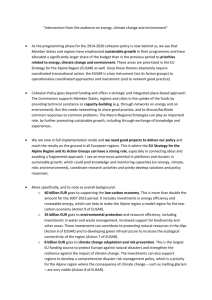
![Real-Life Climate Change Stories [WORD 512KB]](http://s3.studylib.net/store/data/006775264_1-25b312f26ec237da66580d55aa639ecf-300x300.png)
